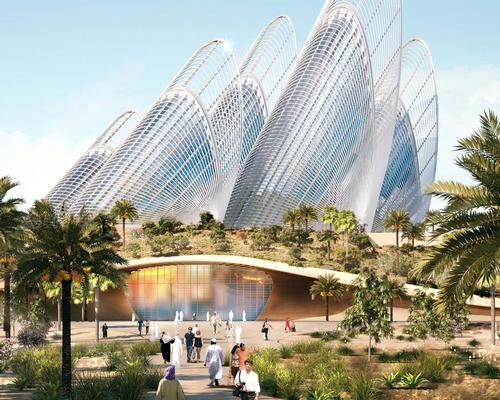21 Nov 2019
Foster + Partners' under-construction Zayed museum in Abu Dhabi could open doors in 2021
BY Andy Knaggs

Zayed National Museum, the Foster + Partners-designed development intended as the national museum of the United Arab Emirates (UAE), looks set for a 2021 opening – nine years on from its originally planned 2012 unveiling.
Named after Sheikh Zayed bin Sultan Al Nahyan, the founding president of the UAE, the museum was first announced in 2007 as one of three major museums planned for Saadiyat Island's Cultural District in Abu Dhabi. While the Louvre Abu Dhabi opened in 2017, work on the Guggenheim is yet to begin.
Construction is, however, underway at the 44,000sq m (144,500sq ft) Zayed National Museum, which will highlight the history of the region and its cultural connections with countries around the world. Two galleries on the ground floor will showcase the life of Sheikh Zayed, and the museum also plans to display national collections and loans from leading world museums.
Among the museum's collection will be the oldest pearl in the world, and a necklace given by Sheikh Zayed to Egyptian singer Umm Kulthum during her visit to Abu Dhabi in 1971.
According to Abu Dhabi's department of culture and tourism, the museum will function as a centre for archeological and heritage research, as well as delivering an educational programme that is aligned with the UAE's school curriculum. Construction progress was highlighted in a video released by the department.
Foster + Partners' design revolves around a cluster of five soaring steel towers that are inspired by the wings of a falcon – the UAE's national symbol. It is set within a landscaped garden that is based on the timeline of Sheikh Zayed's life.
The five steel towers are sculpted aerodynamically to act as solar thermal towers, with air vents at the top to draw the hot air out. Fresh air is captured at low level and drawn through buried ground-cooling pipes, and then released into the museum's lobby.
Beneath suspended, pod-shaped galleries, the central lobby is dug into the earth to exploit its thermal properties, and brings together shops, cafes and informal venues for performances.
Close Window